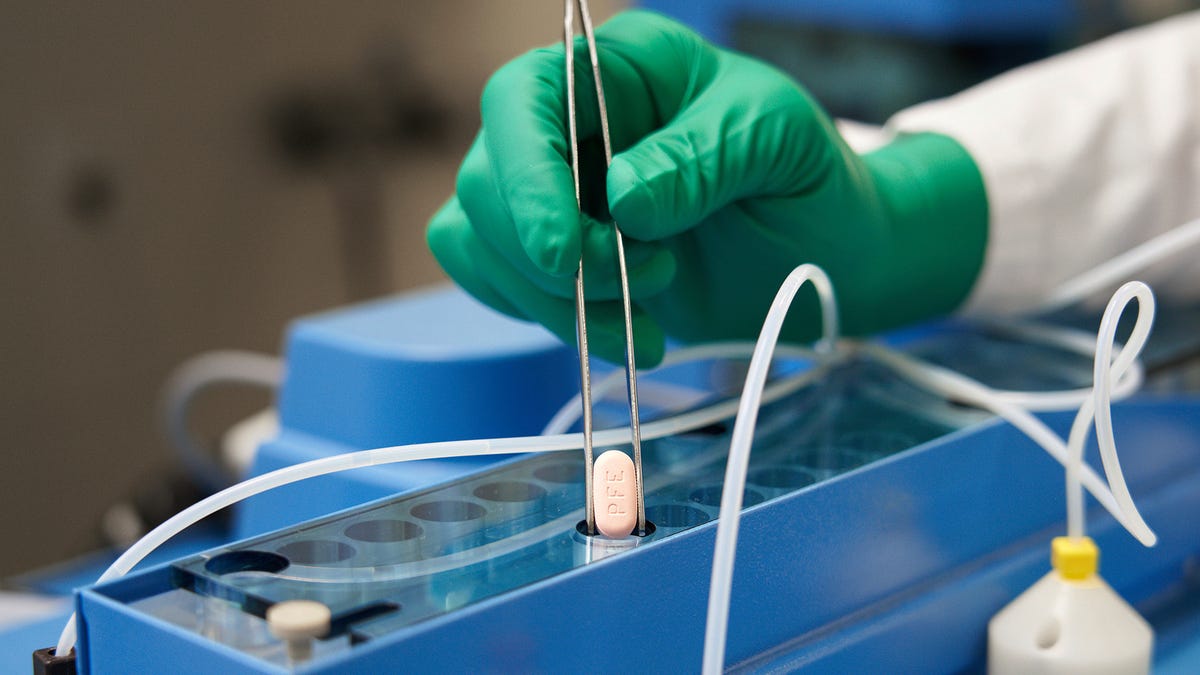Biden administration plans to make antiviral Paxlovid more accessible
The Biden administration plans to double the availability of Paxlovid, a COVID-19 antiviral medication, in the coming weeks.
Damien Henderson, USA TODAY
With COVID-19 cases again on the upswing, the antiviral Paxlovid has been slow to gain traction among patients and doctors even though the medication reduces hospitalizations and deaths.
A recent National Institutes of Health study of about 1 million people found only 15% at risk for severe disease took a five-day course of the prescription medicine. Of the patients who took Paxlovid, the medication reduced the risk of death by 73% and hospitalizations dropped 26%, showing the medicine is highly effective for people at risk of severe complications.
COVID-19 deaths, hospitalizations and visits to the emergency room increased at double-digit rates during the last week of December, the Centers for Disease Control and Prevention reported. But deaths and hospital stays remain far below earlier peaks.
Doctors have been slow to prescribe Paxlovid, in part, due to concerns about interactions with other medicines, even though patients can pause taking the other drugs for a handful of days.
People who might be able to fend off a serious case of COVID-19 are not taking the medication’s five-day course, perhaps due to concerns about minor side effects or even affordability.
This has left only a fraction of those eligible receiving the medication, despite a strong lobbying effort by the Biden administration and public health officials.
What is Paxlovid?
Like other antivirals, Paxlovid is designed to stop a virus from making copies of itself. Limiting the number of copies helps the immune system fight off the virus.
Made by Pfizer, Paxlovid is a combination of two drugs: ritonavir and nirmatrelvir.
Nirmatrelvir, an oval, pink pill, is a so-called protease inhibitor – the same type of drug that turned HIV into a manageable disease. It stops the SARS-CoV-2 virus from replicating.
Ritonavir, a white or off-white pill, boosts the activity of nirmatrelvir.
How long does it take for Paxlovid to kick in?
Paxlovid is given in a five-day course with three pills taken twice a day. Most people report feeling better by the second or third day on the drug.
Pfizer only studied the medication for the full five days, so people should take them as prescribed, said Dr. Aida Habtezion, Pfizer’s chief medical officer.
How to get a Paxlovid prescription
Paxlovid is given only by prescription and can be administered by physicians, pharmacists, advanced practice registered nurses and physician assistants who are licensed or authorized under state law to prescribe antivirals.
The medication is dispensed at pharmacies, and the government has a website listing testing locations for people without health insurance. Others can find a testing site in their community or order free home tests from CovidTests.gov shipped to your household.
Getting tested quickly after symptoms appear is important because the medication must be given within five days of the first symptoms to be effective.
Who is eligible to receive Paxlovid?
Anyone aged 12 and older, has symptoms and is at high risk for severe disease is eligible to receive a course of the medication.
Because so many common conditions, such as obesity, put people at risk for severe disease and because everyone over 50 is eligible regardless of health status, the majority of adults qualify.
Many people are taking it now beyond the narrow restrictions used to initially prove the drug’s effectiveness. It’s not clear, for instance, whether Paxlovid provides substantial benefit to a young, otherwise healthy adult.
But Dr. Wes Ely, a critical care and pulmonary medicine expert at Vanderbilt University School of Medicine in Nashville, said he doesn’t see a reason not to take it. “The potential for benefit is there and the potential for risk is very low.”
Do I need to pay for Paxlovid?
After the drug hit the market more than two years ago, the federal government purchased millions of doses for the public to get for free. Similar to many programs that tapered with the end of the COVID-19 public health emergency, Pfizer now distributes the drug.
Pfizer sells the drug for $1,390 per five-day course. People with private insurance should get part of those charges covered. Patients on Medicare and Medicaid will get the drug for free through the end of this year. Those without health insurance also can get the drug without charges through 2028, under an agreement the Biden administration reached with Pfizer.
It’s unclear whether the handoff from a free medication to one covered by private insurance for working-age adults will limit access. But some doctors who prescribe the drug are worried that might happen,
Dr. Natasha Bhuyan, a family doctor at One Medical in Phoenix, believes reasons for the low uptake include some don’t have access to medical care and others might struggle to pay for the medication.
“If something is expensive, patients won’t take it,” said Dr. Natasha Bhuyan, One Medical’s national medical director. “If something is unaffordable, people are deciding, ‘Should I take this medication or should I pay for my groceries?'”
What to know about metallic taste in mouth and Paxlovid rebound
Paxlovid’s primary side effect is a metallic taste in the mouth during the five days of treatment. It goes away at the end.
“The side effect profile, other than the taste, is extremely tolerable,” Ely said. “Most people will have no side effects from that drug.”
Some who have used Paxlovid also have anecdotally reported a “rebound” — testing positive for COVID-19 or symptoms showing up again two to eight days after recovery, typically lasting about three days. Both President Joe Biden and first lady Jill Biden had rebound symptoms after taking Paxlovid for their COVID-19 infections, as did infectious disease expert Dr. Anthony Fauci.
But research is unclear on whether this phenomenon is really happening. One large study reported no significant differences in rebound rates when comparing people who took Paxlovid and those who didn’t, according to the CDC.
Drugs that interact with Paxlovid
Paxlovid can interact with other drugs, including common ones like blood thinners, some cancer drugs, anticonvulsants, sedatives, erectile dysfunction medications, the herbal remedy St. John’s Wort, and HIV medications. (A complete list of those drugs starts on page 11 of this fact sheet.)
For people taking these medications, it is generally OK, with a doctor’s consent, to pause or adjust them for five days while on Paxlovid. They can be resumed after Paxlovid’s five-day treatment.
Why have doctors been slow to prescribe Paxlovid?
The sluggish pace of Paxlovid prescribing is not surprising to Amesh Adalja, a senior scholar at the Johns Hopkins University Center for Health Security.
Studies have shown other antiviral medications such as Tamiflu, used to treat flu, are prescribed at lower than optimal rates for people who might benefit, Adalja said.
Urgent care doctors are emergency medicine doctors who are not familiar with a patient’s medical history also might be concerned about drug interactions, he said.
Adalja sees this as a missed opportunity to prevent unnecessary hospitalizations and deaths.
“Paxlovid is not a drug that gets you better faster. It’s not a drug that decreases long COVID,” Adalja said. “It’s a drug that prevents you from being hospitalized or dying.”

Rachel Carter is a health and wellness expert dedicated to helping readers lead healthier lives. With a background in nutrition, she offers evidence-based advice on fitness, nutrition, and mental well-being.








